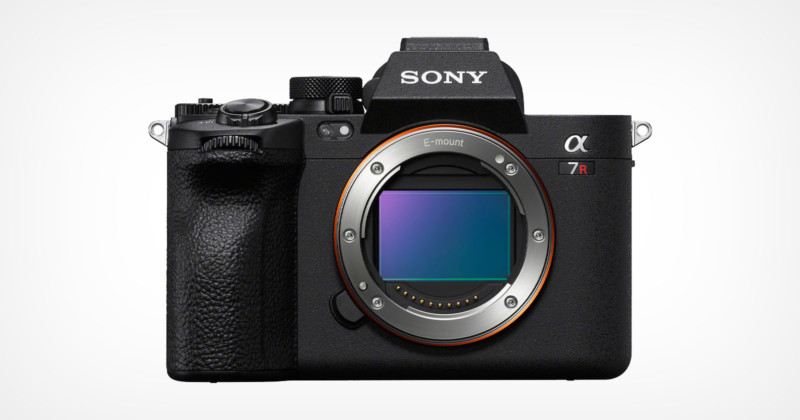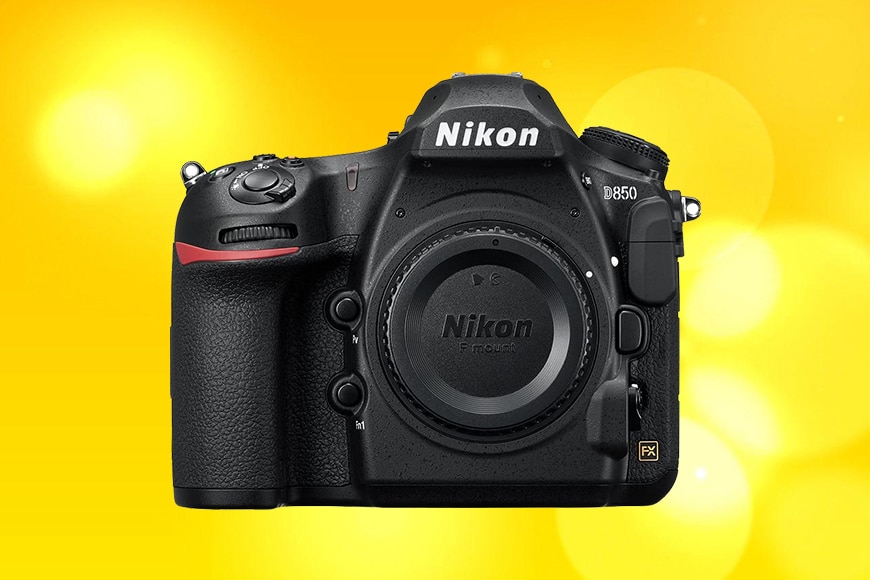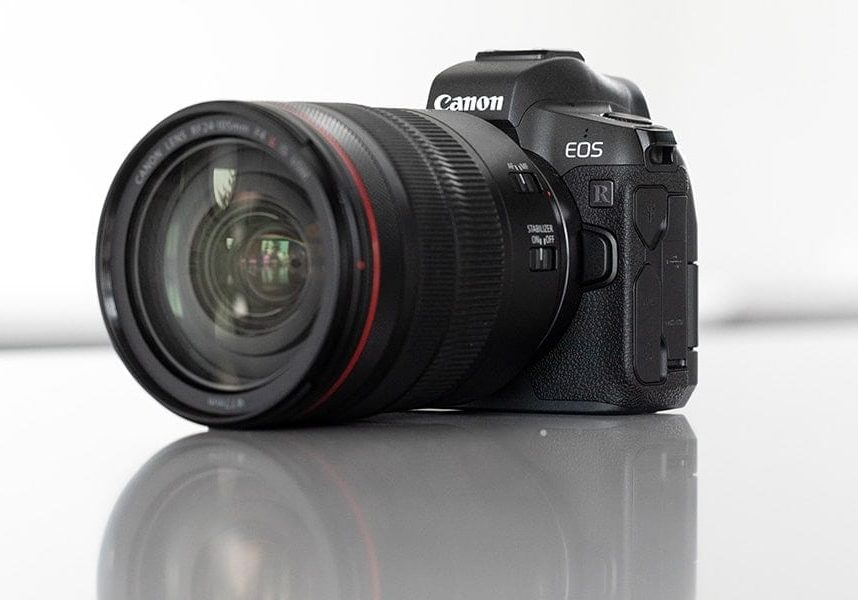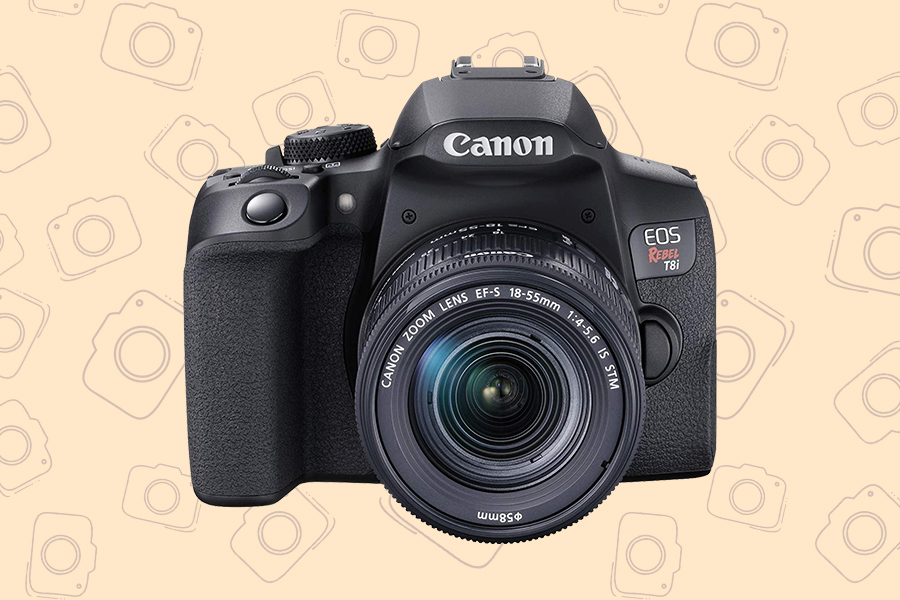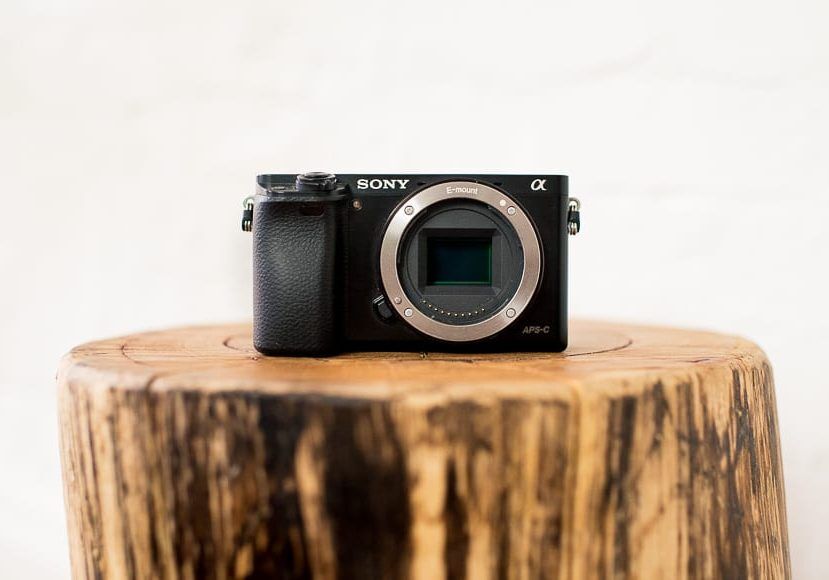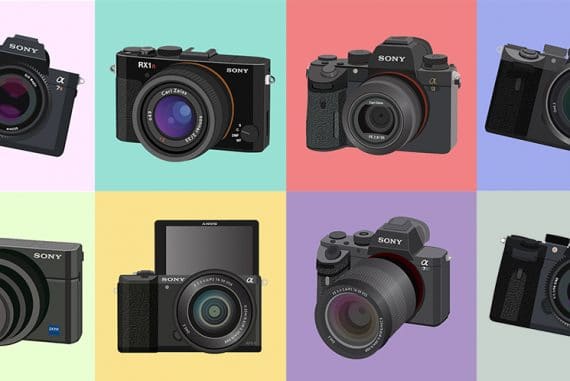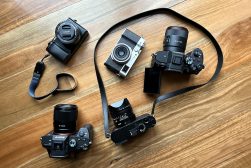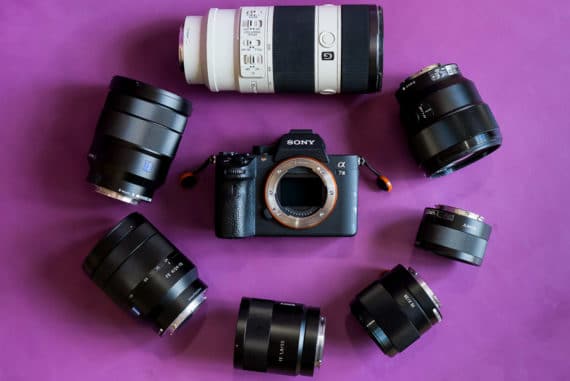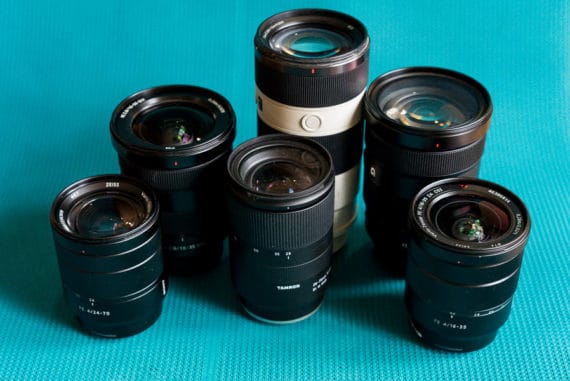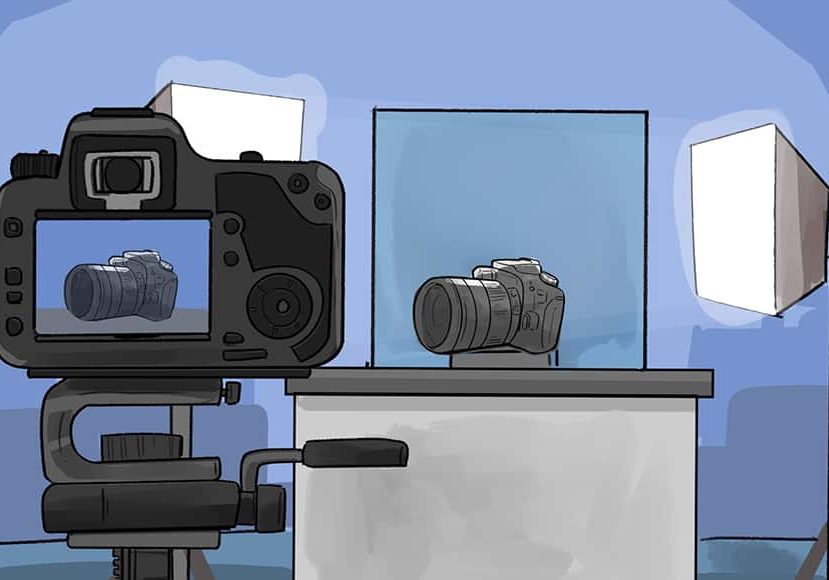
Best Camera for Product Photography in 2023
Taking better photos of products starts with a camera capable of capturing more details. Learn which models do this best with our in depth guide.
I was in two minds about writing this guide to the best camera for product photography.
Let’s be honest – you can use pretty much any DSLR, mirrorless camera, or even a smartphone to take photos of products.
Assuming you need to take some pictures of an item to sell on eBay, for example, any device that takes a photo will do the job.
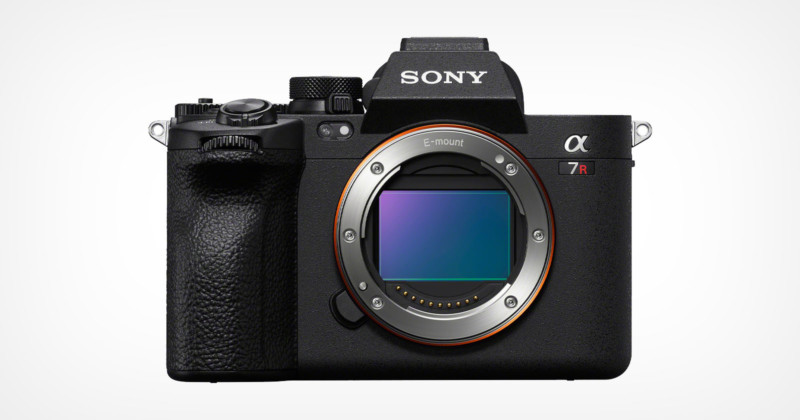
Create incredibly detailed 61MP product images with accurate colours. Robust, ergonomic and a joy to use.
How you light the product and how you edit the product photos afterwards will have a bigger impact than getting a better camera.
(That, and using the right lens for product photography.)
However, if you’re more concerned about professional product photography or finding a camera that will produce a photo like the ones you see in magazines, that’s a different story.
The best camera for product photography (when image quality really matters) needs to have a high megapixel count and, ideally a full-frame sensor.
It’s not mandatory, as I’ll explain later in the article, but it will help.
So with that said, check out our tips on product photography and then have a closer look at the recommendations.
Table of Contents
What is the Best Camera for Product Photography in 2023?
| Image | Product | Features | |
|---|---|---|---|
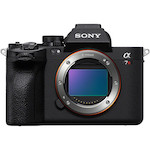 | Sony a7R VOVERALL BEST CAMERA FOR PRODUCT PHOTOGRAPHY |
| CHECK AMAZON PRICE CHECK B&H PRICE |
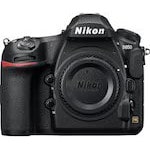 | Nikon D850HIGHLY RECOMMENDED |
| CHECK AMAZON PRICE CHECK B&H PRICE |
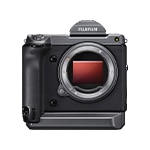 | Fujifilm GFX100 |
| CHECK AMAZON PRICE CHECK B&H PRICE |
 | Canon EOS R |
| CHECK AMAZON PRICE CHECK B&H PRICE |
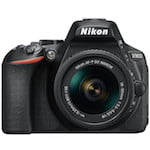 | Nikon D5600 |
| CHECK AMAZON PRICE CHECK B&H PRICE |
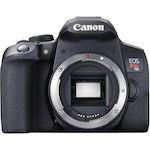 | Canon EOS Rebel T8i |
| CHECK AMAZON PRICE CHECK B&H PRICE |
Sony a7R V | Overall Best Camera for Product Photography
- High resolution for detailed product images
- Excellent dynamic range
- Reliable autofocus
- Robust build
- Expensive
- Complex menu system for beginners
The Sony a7R V is the best camera for product photography if you’re serious about getting high-quality images.
Its 61-megapixel full-frame sensor is a marvel, capturing the minutest details with stunning clarity.
The dynamic range is impressive, ensuring that both shadows and highlights are beautifully rendered.
This camera’s colour accuracy is top-notch, a critical factor when photographing products where colour representation can make or break a product sale.
The Sony a7R V’s autofocus system is incredibly reliable, ensuring sharp focus on your product every time. Obviously, this is only relevant if you’re shooting something that moves.
The high-resolution electronic viewfinder provides a clear and accurate preview of your shot, allowing for precise composition and framing.
Moreover, the camera’s robust build and intuitive design make it a joy to use, even during long shooting sessions.
The Sony a7R V also excels in low light conditions, a feature that can be a lifesaver when photographing products in less-than-ideal lighting situations.
The ability to shoot in 10-bit 4:2:2 video is a bonus, providing flexibility for those who also need to create high-quality product videos.
Overall, the Sony a7R V is a powerhouse of a camera that delivers exceptional image quality, making it an excellent choice for professional product photographers.
Its combination of high resolution, dynamic range, colour accuracy, and reliable autofocus system make it a standout choice for capturing products in their best light.
It’s certainly an investment, but if you’re serious about product photography and want a camera that will help you create images that sell, the Sony a7R V is worth every penny.
Nikon D850
- High resolution for detailed images
- Excellent dynamic range
- Durable build
- Good battery life
- Expensive
- Heavy / bulky
- Limited video capabilities
The Nikon D850 is the best camera for product photography if you prefer Nikon to Sony or already own Nikon FX lenses.
Its 45.7-megapixel full-frame sensor delivers high resolution, ensuring excellent image quality.
The camera’s dynamic range is outstanding, capturing both shadows and highlights with precision.
The Nikon D850’s autofocus system is reliable, based on a hybrid mirrorless/DSLR system, ensuring sharp focus on your product every time.
This impressive DSLR camera’s robust build and intuitive design make it a joy to use, even during long shooting sessions.
The Nikon D850 can produce clean images at high ISOs, letting you take pictures of products in low light without struggle.
The ability to shoot in 4K video is a bonus, providing flexibility for those who also need to create high-quality product videos.
I used the Nikon D850 for several months when it was released, and found it to be a powerhouse of a camera that delivers exceptional image quality.
This makes it an excellent choice for professional product photographers or enthusiasts with deep pockets.
Fujifilm GFX100
- Extremely high resolution
- Medium format sensor
- In-body image stabilization
- Excellent for studio work
- Very expensive
- Heavy
- Not ideal for on-the-go shooting
The Fujifilm GFX100 is a medium format camera that offers an impressive 102-megapixel sensor, making it one of the best cameras for product photography.
Its high resolution and outstanding dynamic range ensure that every detail of your product is captured with stunning clarity.
The GFX100’s in-body image stabilization helps to reduce camera shake, ensuring sharp images even when shooting handheld.
(Normally, you’d be using a tripod for product photography to get the sharpest possible pictures, but it’s nice to know that IBIS is there for you when one’s not available.)
The camera’s robust build and intuitive design make it a joy to use, even during long shooting sessions.
With its medium format camera sensor, the Fujifilm GFX100 will squeeze every pixel of light from your scene, making it perfect for low-light product photo shoots.
Its also able to shoot in 4k, allowing you to crop into your footage for visual variety without losing resolution for web-format videos.
As with all the cameras in the Fujifilm GFX lineup, the GFX1oo is expensive and somewhat overkill for non-professionals or very serious amateurs.
However, if you need a 102-megapixel sensor camera to capture all the details of your product, there’s nothing else quite like the GFX100.
Canon EOS R
- Good resolution
- Excellent dynamic range
- Reliable autofocus
- Good for video
- Expensive
- Limited lens selection
- Single card slot
The Canon EOS R is a full-frame mirrorless camera that offers a 30.3-megapixel sensor, making it a great camera for product photography.
Canon has a broad selection of impressive lenses for its R series mirrorless lineup, and the EOS R can take advantage of all of them.
Just like the other cameras for product photography in this guide, its high resolution and wide dynamic range will help capture all the details of any subject you shoot.
The EOS R’s in-body image stabilization helps to reduce camera shake, ensuring sharp images even when shooting handheld.
When compared to the Sony a7RV, the ergonomics of the EOS R are better – the robust build is similar, but the buttons and dials seem more intuitively placed, and the camera body feels better to hold.
With its full frame sensor, the Canon EOS R does well in low light at high ISOs, helping you out in dimly-lit situations.
You can also shoot in 4K video, providing flexibility when you need to create high-quality product videos or crop down to 1080p for short-form web content.
It’s by no means a budget camera for product photography but as a slightly older (2018) full-frame mirrorless camera with several successors, you can pick it up for a great price.
Nikon D5600
- Good resolution
- Lightweight
- Articulating screen
- Good value for money
- Limited video capabilities
- No in-body image stabilization
- Plastic build
The Nikon D5600 is an excellent choice for those seeking a budget-friendly camera for product photography.
Its 24.2-megapixel DX-format CMOS sensor ensures high-resolution images, capturing the finest details of your products.
The D5600’s wide ISO range (100-25600) allows for exceptional performance in various lighting conditions.
The camera’s vari-angle touchscreen LCD provides flexibility in composing shots from different angles, while the 39-point autofocus system ensures sharp, focused images.
Nikon’s SnapBridge feature is a fun addition, alliwing seamless transfer of images to your smartphone or tablet for quick editing and sharing online.
As with the other cameras on this list, the D5600 supports RAW format, allowing for more editing latitude during post-processing.
In terms of video quality, the D5600 offers Full HD 1080p video recording at up to 60 frames per second, ensuring smooth, high-quality footage.
The camera’s autofocus system performs well in video mode, providing sharp focus throughout your clips.
Despite its advanced features, the Nikon D5600 remains user-friendly, making it an ideal choice for beginners.
Canon EOS Rebel T8i (850D)
- Good resolution
- User-friendly interface
- Good value for money
- Lightweight
- Limited dynamic range
- Plastic build
- Limited video capabilities
The Canon EOS 850D, also known as the Rebel T8i in some markets, is another excellent choice for product photography, especially for those on a budget.
It features a 24.1-megapixel APS-C CMOS sensor, which delivers high-resolution images with excellent detail and colour accuracy.
The camera’s 45-point all cross-type autofocus system ensures sharp, precise focus, which is an important feature in cameras for product photography.
The 850D’s ISO range of 100-25600, expandable up to 51200, allows for great performance in a variety of lighting conditions.
This is particularly useful when shooting products in poor light.
For composing and reviewing shots, the 850D offers a vari-angle touchscreen LCD.
Additionally, Canon’s Camera Connect app allows for easy image transfer and remote camera control.
As with the other entry-level cameras in this guide, the Canon 850D represents great value for money and is an ideal way for those on a tight budget to get detailed photos of products.
It also gives you access to a huge selection of Canon EF lenses.
Fujifilm X-T200
- Good resolution
- Compact and lightweight
- User-friendly interface
- Good value for money
- Limited dynamic range
- No in-body image stabilization
- Limited lens selection
The Fujifilm XT200 is a compelling option for product photography, particularly for those mindful of budget. I
ts 24.2-megapixel APS-C CMOS sensor delivers crisp, detailed images, capturing the nuances of your products.
The XT200’s Light Trail mode is a unique feature that can add a creative touch to your product shots.
The camera’s wide ISO sensitivity range (200-12800, extendable to 100-51200) ensures excellent performance across diverse lighting scenarios, which can be helpful when photographing products.
The camera’s 3.5-inch vari-angle touchscreen, one of the largest in its class, offers an intuitive interface for composing shots and reviewing images.
The XT200 also features Fujifilm’s Film Simulation modes, which can add a distinctive look to your product photos in-camera, bypassing any time req
Furthermore, the camera’s wireless connectivity options facilitate easy image transfer.
The Fujifilm XT200 offers a blend of performance, versatility, and value, making it a strong choice for product photography.
While there are plenty of excellent Fujifilm XF lenses available for the X-T200, the line up is notably smaller than that of Canon, Sony and Nikon.
Sony a6000
- Good resolution
- Compact and lightweight
- Affordable
- Good value for money
- Limited dynamic range
- Older model
- Limited video capabilities
The Sony a6000 stands out in the realm of product photography, not only for its impressive features but also for its affordability.
In comparison to other cameras in its class, the a6000 offers a high-quality experience at a fraction of the cost.
This makes it an excellent choice for those who are just starting out in product photography or for professionals looking for a budget-friendly backup camera.
Despite its lower price point, the a6000 doesn’t compromise on image quality.
Its 24.3-megapixel APS-C sensor delivers high-resolution images that far surpass what you can achieve with a smartphone camera.
While smartphones have come a long way in terms of their photography capabilities, they still can’t match the level of detail, color accuracy, and dynamic range that a dedicated camera like the a6000 can provide.
Moreover, the a6000 offers the flexibility of interchangeable lenses, allowing you to choose the perfect lens for each product you’re photographing.
This is a significant advantage over smartphones, which typically have fixed lenses.
Sony’s PlayMemories Mobile app allows for convenient image transfer and remote control of the camera.
The a6000 also supports continuous shooting at up to 11 frames per second, which can be useful for capturing products in motion.
What’s the Best Phone Camera for Product Photography?
Modern smartphones come equipped with high-quality cameras and advanced features that can produce excellent results for product photography, especially for online platforms where easy sharing is a plus.
Here are some good phones for product photography:
- iPhone 14 Pro and 14 Pro Max: The iPhone Pro models feature a triple camera system with improved low-light performance, sensor-shift optical image stabilization, ProRAW for more editing control, and ProRes video recording.
- Samsung Galaxy S21 Ultra: This phone features a quad-camera system, including a 108-megapixel wide sensor for high-resolution photos, two telephoto lenses, and a 12-megapixel ultra-wide lens. It also offers a 100x Space Zoom feature.
- Google Pixel 7 Pro: Known for its excellent computational photography capabilities, the Pixel 6 Pro features a new camera system with improved sensors and lenses. Google’s software enhancements like HDR+ and Night Sight make it a strong contender.
- Huawei P40 Pro: The P40 Pro has a Leica quad-camera setup with a 50-megapixel wide sensor, a 12-megapixel periscope telephoto lens, a 40-megapixel ultra-wide lens, and a TOF 3D depth sensor. Its low-light capabilities are particularly impressive.
Remember to use Advanced Features where available like Portrait Mode for a shallow depth of field effect, Night Mode for better low-light photos, and HDR for improved dynamic range.
However, while smartphones can produce great product photos, they do have limitations compared to DSLRs or mirrorless cameras, such as smaller sensors and less control over settings.
For high-end product photography, especially for large prints or high-end advertising, professional photographers obviously can’t turn up to a shoot with just a phone!
What’s the Best point-and-shoot camera for product photography?
Here are a few examples of high-megapixel point-and-shoot cameras that could be used for taking photos of products:
- Sony Cyber-shot RX100 VII: This camera features a 20.1-megapixel 1-inch sensor and a fast, versatile 24-200mm equivalent zoom lens. It also offers advanced features like a pop-up electronic viewfinder, 4K video recording, and high-speed autofocus.
- Canon PowerShot G5 X Mark II: This camera has a 20.1-megapixel 1-inch sensor and a 24-120mm equivalent zoom lens. It also features a pop-up electronic viewfinder and supports 4K video recording.
- Panasonic Lumix DC-ZS200 (also known as the TZ200): This camera has a 20.1-megapixel 1-inch sensor and a long 24-360mm equivalent zoom lens, making it a versatile choice for a variety of shooting situations.
These cameras offer a good balance of image quality, portability, and ease of use, making them a good choice for those who want high-quality images without the complexity of a DSLR or mirrorless camera system.
How Can I Improve the Quality of the Photos I Take of Products (With the Camera I already own?)
Improving your product photography doesn’t necessarily require a new camera.
Here are some tips to help you get the most out of the camera you already own:
- Lighting: Good lighting is crucial in product photography. Natural light can work well, but you might also consider investing in some affordable lighting equipment, such as a lightbox for small products or some softbox lights for larger items. The goal is to evenly light your product to avoid harsh shadows and highlight its features.
- Background: Use a simple, uncluttered background to ensure that your product is the focus of the image. A roll of white paper or a professional photography backdrop can work well.
- Stability: Use a tripod to keep your camera steady. This can help to prevent blurry images and allows you to experiment with different angles and compositions.
- Manual Settings: If your camera has manual settings, learn how to use them. Adjusting the aperture, shutter speed, and ISO can give you more control over how your images look.
- Composition: Think about how you arrange your product and any other items in the frame. The rule of thirds, where you divide your frame into a 3×3 grid and place your product along the lines or at their intersections, can be a good starting point.
- Post-Processing: Learn how to use photo editing software to enhance your images after you’ve taken them. This can include adjusting the exposure, contrast, and color balance, as well as retouching any imperfections.
- Experiment: Try different angles, settings, and lighting conditions to see what works best for your product. Photography is a creative process, so don’t be afraid to experiment and learn as you go.
Why is a Full Frame Camera Better for Product Photography?
A full-frame camera is often a preferred choice for product photography due to its superior image quality.
The larger sensor size of a full-frame camera allows it to capture more light and detail.
This results in clearer, more detailed images, especially in low-light conditions or when capturing the intricate details of a product.
Full-frame cameras also offer a shallower depth of field compared to crop sensor cameras.
This allows you to keep the product in sharp focus while achieving a beautifully blurred background, a popular effect in product photography.
Additionally, full-frame cameras typically have a better dynamic range.
This means they can capture more detail in the highlights and shadows, which can be particularly important when photographing products with varying tones and textures.
Lastly, full-frame cameras often have a wider selection of compatible lenses, giving you more flexibility to choose the best lens for each product and situation.
So, while full-frame cameras are often more expensive, their benefits can make them a worthwhile investment for product photography.

Create incredibly detailed 61MP product images with accurate colours. Robust, ergonomic and a joy to use.





